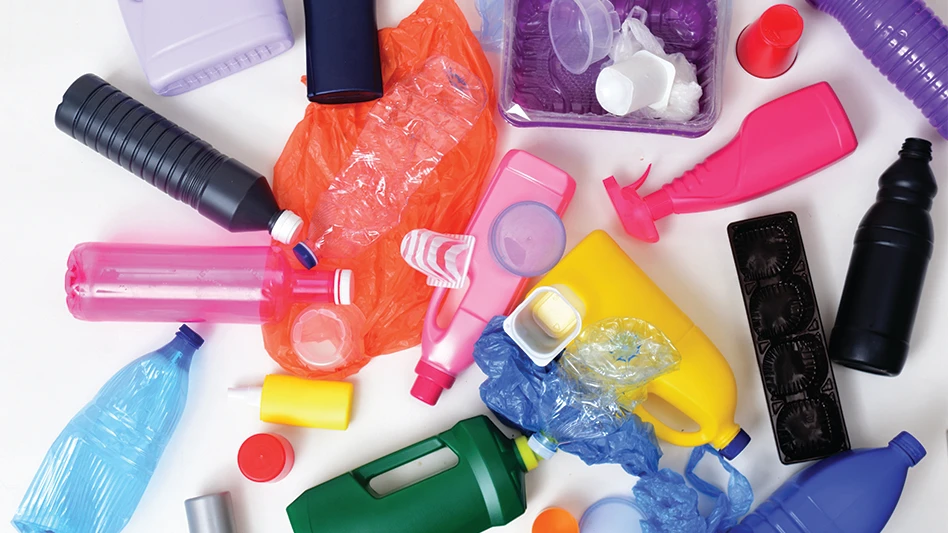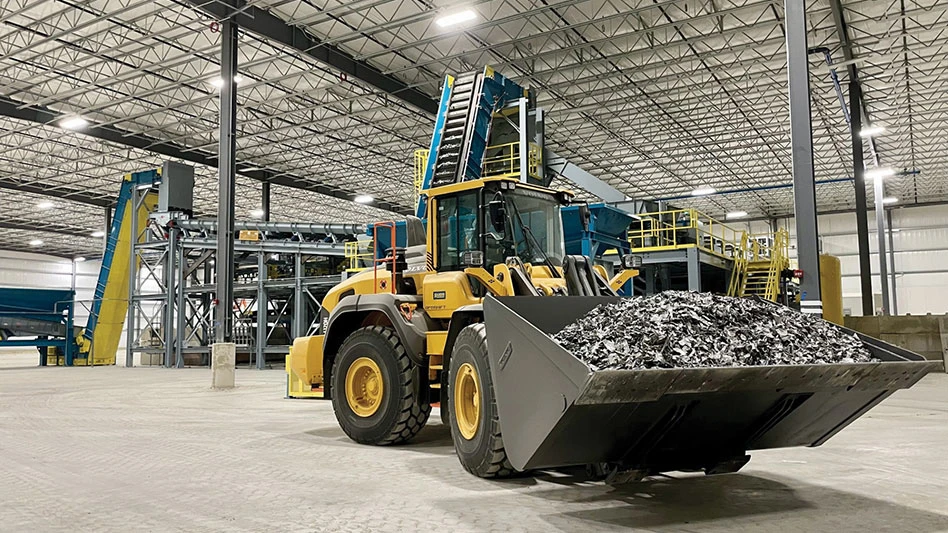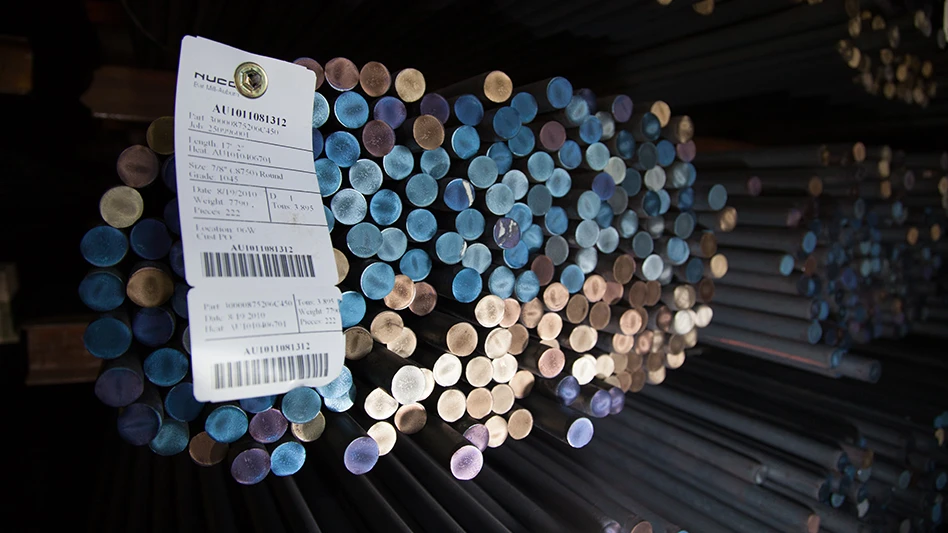Smart investors know it’s never a bad idea to plan for the future. The smartest seem to know that it’s never too early to start.
Many manufacturers are starting to take a similar forward-looking attitude toward their products. Whether pushed by legislation or by competition to be environmentally friendly, many manufacturers are investing in the future by implementing Design for Recycling (DFR)—a policy the Institute of Scrap Recycling Industries Inc. (ISRI) has promoted that, as its name suggests, promotes designing products with their recyclability in mind from the very beginning.
BY THE BOOKS. The DFR initiative was actually coined by the Institute of Scrap Iron and Steel (ISIS) in the early 1980s prior to the merger with the National Association of Recycling Industries (NARI) that created ISRI. The concept of Design for Recycling encompasses several aspects of manufacturing products with safe, easy recycling at their end of life in mind.
First and foremost, the policy encourages manufacturers to make sure consumer products can be safely and economically recycled. This includes eliminating or reducing hazardous or non-recyclable compounds used in products. ISRI’s official policy position on Design for Recycling also states that manufacturers who are required to redesign their products for better recycling should receive transitional assistance. "Manufacturers should not be asked to bear all the costs of Design for Recycling any more than recyclers should be required to continue to bear all the environmental risks of recycling in the absence of appropriate product design," states the ISRI policy page on the topic.
Recently, encouraging manufacturers to think about the recyclability of their products has taken a legislative bent, with the approval of two state bills addressing mercury switches in automobiles. An Arkansas law enacted in early 2005 is the first law on the books in the United States that requires manufacturers to address DFR issues, according to Mark Reiter, chief lobbyist for ISRI. In addition to calling for the removal of mercury switches from end-of-life vehicles, the law requires manufacturers to report to the state on their progress in minimizing hazardous materials and maximizing the recyclable yield of their products. "What Arkansas has done is pose a series of questions that manufacturers have to respond to annually by law that ask, ‘What have we done to design our products better?’" says Reiter.
According to Reiter, a similar bill was approved in North Carolina, and several other states are looking into it.
In Europe, some of the latest European Union legislation has the same idea in mind. The End-of-Life (ELV) Vehicle Directive, which was enacted in October 2000, calls for similar and even stricter measures of recycling-friendly manufacturing of automobiles. For example, ELV-compliant cars on the market after July 1, 2003, cannot contain mercury, hexavalent chromium or lead cadmium, with a few exceptions, according to EUROPA, the official Web site of the EU.
"Globally, we are seeing a number of instances where Design for Recycling is being incorporated, at least conceptually, and that is a motivation, especially for global manufacturers," says Scott Horne, vice president of government relations and general counsel for ISRI.
However, while legislation is one way to encourage manufacturers to produce more recyclable products, Design for Recycling proponents hope to keep the initiative mostly out of the realm of legislative mandate and to make it a more voluntary practice in the United States.
CONSUMING POWER.
"We’re trying to say, ‘Do it voluntarily, it’ll be good in the long run,’" says Horne of ISRI’s Design for Recycling policy.The initiative’s proponents hope that consumer pressure more than legislative pressure will play a larger role in implementing Design for Recycling in the United States.
"Manufacturers are really driven by what consumers want," says Alan Ratner, chair of ISRI’s Design for Recycling Task Force and president of Metal Management Northeast. "Incentives can come legislatively, which is occurring elsewhere in the world, but the principle pressure is the buyer."
Rick Gross, director of environmental affairs for the Electronics Industry Alliance (EIA), an Arlington, Va.-based trade association representing manufacturers and retailers, agrees. "The biggest single driver toward design improvement is market innovation and competition," he says. Gross says that as electronic products become more homogenized, manufacturers that can tout recyclable design can distinguish themselves in the marketplace.
Part of Design for Recycling, therefore, is public education. "We’re looking at trying to introduce something in the U.S. that would cause the average buying public to want to participate and let the manufacturer know that they would prefer to buy products that are more recyclable."
A labeling system could inform consumers of a product’s recyclability, says Manny Bodner, ISRI Gulf Coast Chapter president and president of Bodner Metal & Iron Corp., Houston. "You don’t have to tell a consumer what to buy—I sincerely believe that the consumer will make the right decision," Bodner says. "If an item is 100-percent recyclable or 90-percent recyclable, then that is going to be a very powerful incentive to induce the manufacturer to provide a product that his customer will want to purchase."
However, labeling could prove more applicable to some products than others. Laptop computers, for instance, already require many regulatory labels, and manufacturers might prove resistant to additional ones, says Gross. However, he says that recycled content and other Design for Recycling information could be included on the manufacturing company’s Web site or in the product’s owner’s manual, if not on the actual product itself.
Just how much the environmentally friendly factor means to consumers is tough to judge, says Chuck Carr, vice president of communications for ISRI. "It truly depends on the consumer," he says. "But more and more today you’re seeing people interested in automobiles with energy efficiency—you’re getting a much more savvy consumer."
Carr likens the situation to that of airbags in automobiles. "Years ago, manufacturers resisted airbags because of cost, and now they’re trying to outdo themselves putting this feature in," he says. "Consumers became more educated and showed with their buying practices that cars with airbags are worth the extra cost."
However, even with willing manufacturers and an eager consuming public, DFR has challenges to face.
THE PROBLEM WITH PLASTIC.
The use of plastics, especially in electronic consumer products, creates a number of hurdles for manufacturers interested in pursuing Design for Recycling. For one thing, multiple resins used in the design and manufacturing phase can complicate recycling the product at the end of its useful life.In addition, plastics recycling is still playing catch-up in many ways to the more established practice of scrap metal recycling. In regards to recycled plastics, "there’s a bias on the part of engineers, a perception that [recycled content] materials are inferior," says Horne. Use of secondary commodities in the metal and paper industry is so well established that quality is scarcely questioned on a whole, but the plastic industry is still working to overcome that manufacturing bias, he says.
That bias, in part, could be assigned to the fact that plastic polymers will degrade over time, says Gross. This results in some recycled plastic components being used in applications with less stringent quality specifications as they are recycled over and over again, from a computer casing to a car bumper and eventually as fuel stock because of its petroleum content, as an example, says Gross. This characteristic puts plastic at a distinct disadvantage when compared to scrap metal recycling. "Metal you can use as if it was new," he says.
Plastic consumer products also face problems with hazardous materials that make recycling dangerous. While vehicles have mercury switches and lead components, plastics have brominated compounds, which are often used as flame-retardants in computer casings and other consumer electronics, says Reiter. Manufacturers interested in DFR are looking for substitutes for brominated compounds, he says.
Other manufacturers try to avoid using them at all. According to Apple.com, Apple uses plastic enclosure parts that do not contain flame-retardants in several of its products to help it meet Design for Recycling standards. Some manufacturers turn to redesign to avoid the use of flame retardants altogether by constructing the product so that the power supply is farther away from the casing, according to Chris Cleet, EIA’s manager of environmental affairs.
In addtion to redesigning products to facilitate recycling, there has also been progress made in the industry to improve plastics recycling, says Gross, especially when it comes to separation technology. "The processes of separating are becoming better so the material is becoming purer," he says.
Product assembly and disassembly is another arena where manufacturers can make products easier to recycle. "Using fewer screws, which several companies are doing, when assembling the product makes it easier and less costly to disassemble at the end of life," says Gross.
EYE ON THE FUTURE. Design for Recycling proponents say that planning for recycling from a product’s design stage will have broader positive effects on the environment as a whole and not just make life easier for recyclers.
"There’s probably nine or 10 well-recognized areas that Design for Recycling can influence our lives," says Ratner. DFR can affect the environment by making products easier to recycle, decreasing the risks posed to workers by creating products that are safer to recycle and by preserving raw materials, according to Ratner.
These bigger goals are just as important, says Ratner. "Design for Recycling is a core principle to our beliefs as recyclers because it embodies so many aspects of what we’re trying to influence and shape in our businesses and everyday lives."
The author is associate editor of Recycling Today and can be e-mailed at jgubeno@gie.net.

Explore the January 2006 Issue
Check out more from this issue and find your next story to read.
Latest from Recycling Today
- Indiana county awarded $65K recycling grant
- Mixed paper, OCC prices end year on downward trend
- Updated: CAA submits final draft program plan in Oregon
- Enviri names new president of Harsco Environmental business
- Survey outlines ‘monumental challenge’ of plastic packaging collection in UK
- Nippon Steel acknowledges delay in US Steel acquisition attempt
- BASF collaborates to study mechanical plastic recycling
- Commentary: navigating shipping regulations for end-of-life and damaged batteries





